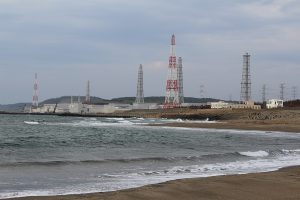This winter Japan is once again asking households and companies to conserve electricity as the country braces for falling temperatures. “Warm biz,” the government’s latest campaign, encourages residents to dress warmly in turtlenecks and sweaters in an effort to prevent blackouts.
Last March, for the first time in seven years, residents were urged to curb power consumption amid a global energy squeeze and colder weather attributed to the La Nina weather phenomenon. By summertime, Japan narrowly avoided power outages.
Despite pledging to decarbonize the economy through renewables and the country’s centerpiece hydrogen energy strategy, Japan is pivoting back to nuclear power in an attempt to regain some energy independence. Nuclear power has traditionally been Japan’s main low carbon energy source. But in the aftermath of the Fukushima nuclear disaster in 2011, anti-nuclear power sentiment gripped Japan. In response, the government shut down all 54 nuclear reactors and began phasing out nuclear power from the total energy mix. Currently, only nine are operational.
Now soaring energy costs have prompted the government to extend the 60-year operating limit for nuclear reactors and develop next-generation reactors to replace them. In doing so, Japan follows Europe and the United States, which have extended the life of nuclear reactors as long as safety tests are passed.
According to Japan’s latest nuclear energy policy, “nuclear power serves an important role as a carbon free baseload energy source in achieving supply stability and carbon neutrality.” That signals a major shift in the nation’s mood toward nuclear energy.
Before the Fukushima nuclear accident, nuclear power accounted for 30 percent of Japan’s energy needs; as of March 2021, the share of nuclear power had plunged to just 3.9 percent. But the government is now seeking to boost the figure to as much as 22 percent by 2030, which will require some 27 operational nuclear reactors. Next summer, the government aims to add seven reactors back into operation. But some experts are doubtful whether the additional nuclear reactors can pass the stricter safety tests by 2030. Meanwhile, the construction of next generation nuclear reactors will begin in 2030, though it is likely to take some 10 years before they become fully operational.
Japan is walking an energy tightrope in the long term as well as short term. In fiscal year 2021 Japan’s energy self-sufficiency rate stood at 13.4 percent – lower than many other developed countries. Japan’s electricity reserve ratio, which indicates its electricity surplus, is expected to fall below the 3 percent minimum needed for a stable supply. This means a small to medium-sized thermal power plant can cause a blackout should demand outstrip supply.
While some experts believe the promotion of nuclear power plants has become a drag on the introduction of renewable energy, the government has also been actively promoting the development of solar power and offshore wind power. It aims to double solar and wind generation by 2030. Last year, the Tokyo metropolitan government announced a compulsory solar panel mandate on new homes built after fiscal year 2025.
But a major obstacle is manufacturing commercially viable backup storage batteries. Japan’s mountainous topography and limited sun exposure during winter make batteries essential to expanding weather-dependent renewable energy sources.
Nuclear power and coal fired power plants have been a stable source of baseload power. But in recent years, LNG power plants have not only supplemented unstable sources of renewable energy but have also taken on a role as a baseload power source, making Japan more dependent on LNG imports. For many years, the price of LNG has remained consistently low. But the supply of LNG has changed dramatically since Russia’s invasion of Ukraine. Japan depends on Russia for roughly 9 percent of its LNG imports. Its geographic proximity is an advantage since LNG can only be stored for two weeks and must be continuously sourced.
Japan has pinned its hopes on hydrogen as a clean and greener way to achieve net carbon zero. It has plans to establish Japan as a global hydrogen hub, but currently hydrogen energy remains significantly more expensive than fossil fuel alternatives. While hydrogen does not emit carbon dioxide when used as energy, it is referred to as an “energy carrier” as energy is required to produce it. What’s more, Japan’s ambiguous definition of “clean” hydrogen also lumps together “blue” hydrogen energy – generated from fossil fuels – and “green” hydrogen derived from renewable sources. There are concerns that hydrogen energy could thus play a role in sustaining fossil fuels.
Japan’s low energy supply capacity stems from the simultaneous exit of old thermal power plants under the government’s strategy to achieve net zero emissions by 2050, and the delay in restarting nuclear power plants. It is also a result of Japan’s push to deregulate the electric power industry and electricity retail sector in the aftermath of the 2011 Fukushima nuclear accident. The entry of new power suppliers has created a situation where it is cheaper for major power companies to source electricity from the retail market than to generate it.
With electricity rates rising to record levels, the government’s decision to revive nuclear energy in its Clean Energy Strategy is said to have been devised in just four months. The move to replace aging reactors with new generation models will commit the natural-disaster prone nation to relying on nuclear power for generations to come, with limited debate around economic efficiency and public approval.

































